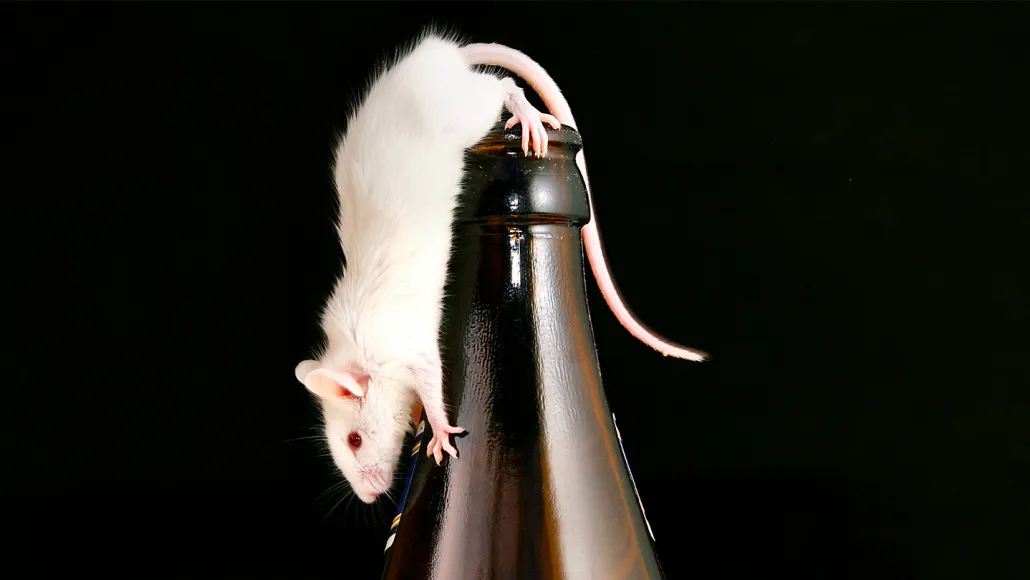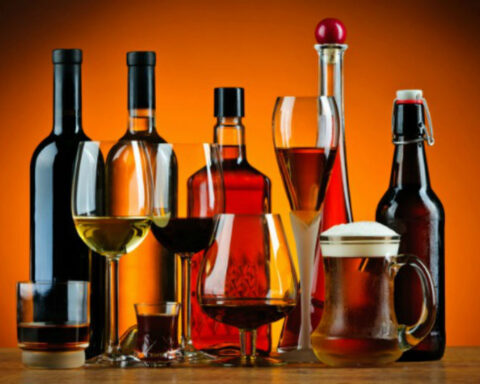Wouldn’t it be nice if you could stave off the miserable effects from a night out drinking by simply popping a pill? Researchers are now one step closer to that reality, developing a gel that helped mice quickly and safely break down alcohol.
The gel is a combination of iron atoms and the milk protein beta-lactoglobulin. When it encounters alcohol in the digestive system, this combo mimics the behavior of an enzyme that converts ethanol into acetate, food scientist Jiaqi Su of ETH Zurich and colleagues report May 13 in Nature Nanotechnology.
As the body naturally breaks down alcohol, it produces the by-product acetaldehyde, which causes hangovers and can damage the liver. “One really nice feature of [the new gel] is they’re able to convert alcohol directly to acetate, which means there’s no accumulation of the toxic intermediate,” says biochemist Duo Xu of Stanford University. “It’s like a hydrogel-based nano-liver that does the work for us.”
If the gel works in humans, Su and colleagues say, it could be used to prevent hangovers and potentially the harms of chronic drinking (SN: 3/22/23). Over time, excessive alcohol use can damage vital organs such as the heart, liver and brain. A 2023 study found that about 5 percent of the global population suffers from liver diseases related to drinking too much alcohol.
To test the gel, Su’s team fed it to eight mice and then waited 20 minutes before plying the rodents with booze. Eight other mice received gel without iron and eight more were given a saline solution and force-fed alcohol 20 minutes later.
Timing was crucial. “More than 30 percent of ethanol is absorbed within our colon,” Su says, so the gel needs time to get there. But, adds ETH Zurich materials scientist Rafaelle Mezzenga, “if you wait too long and you let alcohol go and pass into the bloodstream, it’s too late.” There’s nothing to do but wait for your body to break down the spirit on its own. Though Xu notes that taking the gel after drinking too much would probably still help because it also breaks down acetaldehyde.
The blood alcohol content of mice that had been fed the iron-milk gel was consistently lower than the other mice’s over time, topping out at about 200 milligrams per deciliter compared to the controls’ 350 mg/dl. Though all the mice passed out after being fed alcohol, mice that had eaten the iron-milk gel woke up two hours earlier than the others. What’s more, the gel protected mice from liver damage.
Six hours after the alcohol binge, the researchers put the mice through a sobriety test of sorts. In a water maze, mice that had eaten the iron-milk gel swam faster and searched for the exit more efficiently than mice that had been given just milk gel or saline. Their performance was on par with mice that had never been fed alcohol.
Now that it’s clear that the iron-milk gel is safe and effective in mice, Su’s team is working to get trials in humans started.
By Darren Incorvaia




